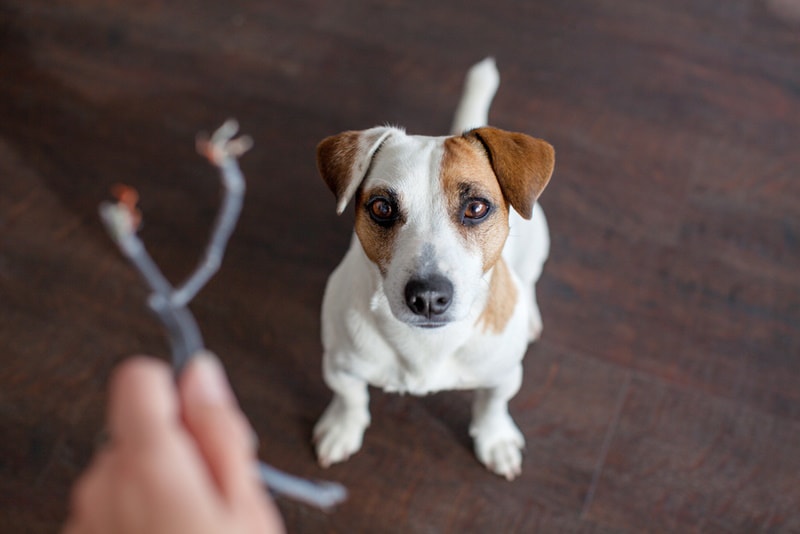14 Newfoundland Dog Pros & Cons You Need to Know

Updated on

Click to Skip Ahead
Looking for the perfect large dog to join your family? Well, why not go with a Newfoundland? These dogs are big, strong, loyal, and adorable—the perfect combo. But are they easy to train? Can you trust a Newfie to look after your kids? Is shedding going to be a problem? Yes, we know all these questions can be a bit overwhelming.
That’s exactly why we put together this list! Join us, and let’s talk about the biggest pros and cons of owning a Newfoundland. We’ll review personality traits, eating habits, grooming needs, and more. Read on to learn everything there is to know about the advantages and disadvantages of adopting a Newfie dog!
The 7 Pros of Owning a Newfoundland
These gigantic dogs have more charm than the cutest toy breeds and can protect you from the biggest threats. More importantly, Newfies are protective, adaptable, open, and patient toward kids, and not very clingy (although they do require your attention).
Here’s a detailed breakdown of all the pros of owning such a dog:
1. They Are Extremely Affectionate
Trusting, soft-tempered, and gentle, Newfoundland dogs are among the most affectionate animals on the planet. That might not be obvious when you see this giant in person, but it will become clear the second you bond with it. Families in the market for a big, strong, yet bubbly and cuddly doggo will find Newfies to be the ideal candidates.
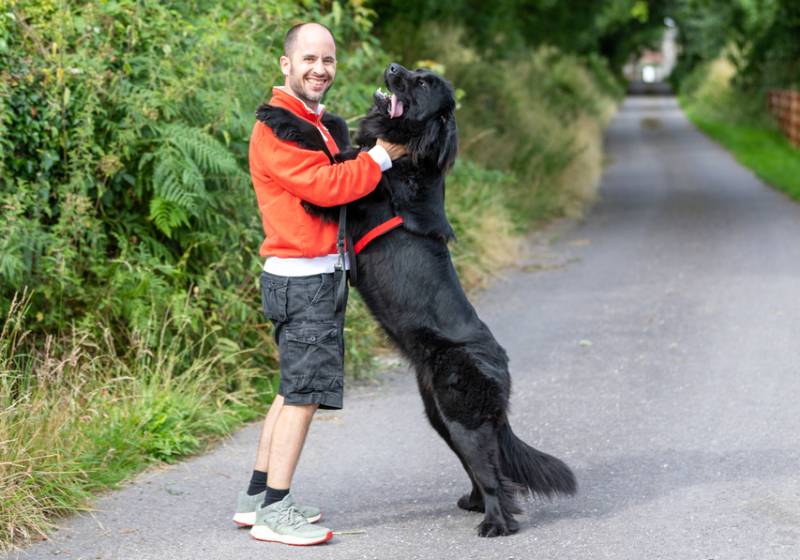
2. Newfoundland Dogs Are Great With Kids
There are lots of tender-hearted and friendly dogs out there, but that doesn’t necessarily mean they’re good with children. Most pooches have very little patience and tolerance when it comes to little kids. We’re happy to say that this doesn’t apply to the Newfoundland breed. These dogs have an easy-going character and sweet temperament and can serve as the perfect four-legged nanny for kiddos.
You’ll still have to supervise the pet and teach the kids how to behave around dogs, of course. Children that have little to no experience with giant dogs should NEVER be left alone with a Newfy. But, again, as far as family-friendly, obedient, and patient dogs go, Newfoundlands are right there on top of the list.
3. Newfs Are Loyal, Protective, and Easy to Train
Loyalty is always hard to come by, yet that won’t be a problem with a Newfie. Treat the dog right, and you’ll get yourself a faithful, fearless protector. Newfoundland dogs are amazing guardians and watchdogs. Despite their large size, they have a mighty bone structure and stamina for days. No intruder will be able to escape their watchful eyes!
More good news: Newfy dogs command respect and are quick to assume the role of a leader/protector. But they’re also happy to follow your lead as the “alpha of the pack”. So, you won’t have to put in long hours into training to help it become a full-fledged member of the family.
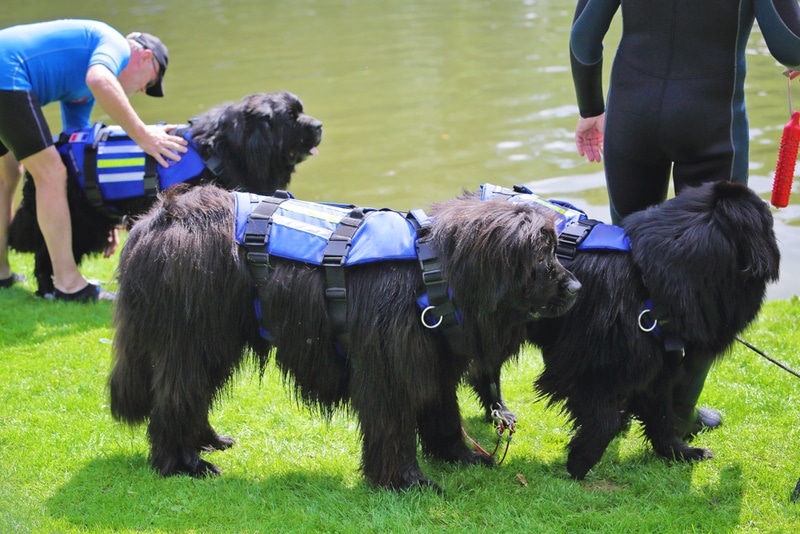
4. These Dogs Are Quick to Adapt
Do you move around a lot? Are you concerned that the frequent change of scenery might affect the dog’s mood? You can stop worrying because Newfoundland dogs have an above-average adaptability level. They handle change with ease. This can be new living conditions, daily regime, climate, and other sudden shifts in their lives.
5. Newfoundlands Don’t Require Hours of Exercise
If you’re a busy person and can only spend an hour playing/exercising with a pet, do consider getting a Newfoundland. These pooches are hardworking, loyal service dogs that don’t need you to spend half of the day with them. On average, 30–40 minutes of exercise is enough to keep the dog fit, healthy, and happy. Walking, hiking, running, swimming, and playing fetch are among this breed’s favorite pastimes.
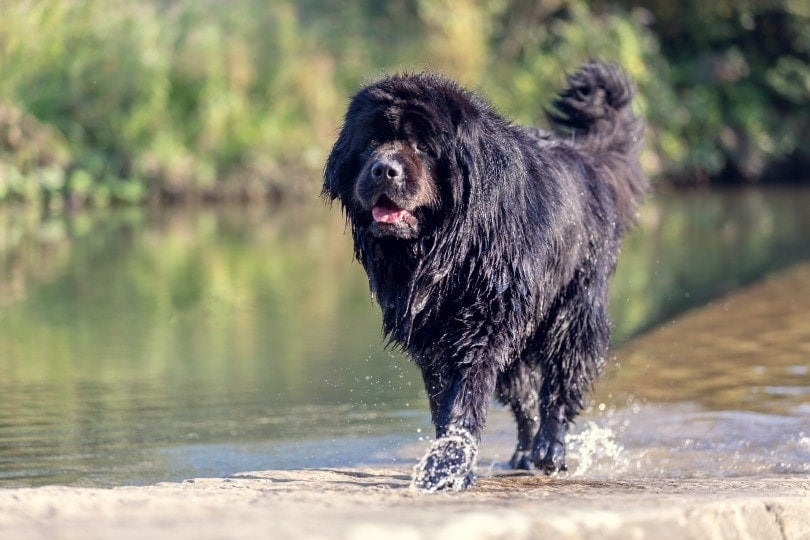
6. They Rarely Bark or Howl
Very few things are worse than a dog that barks whenever it feels like it. That leads to sleepless nights, lack of peace during the day, and angry neighbors that have had enough of your barking doggo. Thankfully, Newfoundlands only howl or bark when absolutely necessary. So, when a Newfie gets vocal, you better see what the fuss is about!
7. Newfies Are Excellent Indoor Pets
Do these dogs like outdoor activities? Of course, they do! And it’s very important to let a Newfy enjoy fresh air once in a while. That said, they are perfectly happy when “stuck” in a house or even an apartment. As long as there’s enough space for the pooch to stretch its legs, it won’t get anxious, destructive, or moody. So, if you’re a stay-at-home-watch-a-movie kind of person, get yourself a Newfoundland dog!
It will sit right next to you on the couch and vibe to a TV series, film, or video game.
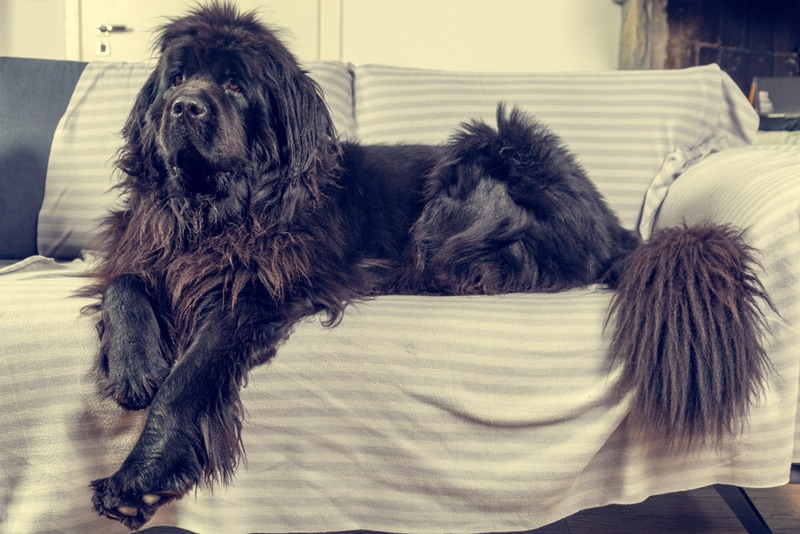
The 7 Cons to Newfoundland Ownership
Now that we’ve covered the pros of owning a Newfoundland, it’s time to talk about the disadvantages. As a Newfie parent, it’s your job to groom, feed, and clean after it, and that can be a bit tiresome. Also, some doggos tend to be a bit stubborn or aggressive.
Here’s a closer look at all the cons and how to handle them:
8. Grooming a Newfie Takes Time
Planning on adopting a Newfoundland dog? Make sure you’ll have enough time to groom it! The double coat looks amazing and protects the doggo from cold weather. However, it also takes effort to keep in shape. Newfies shed quite a lot; so, if you fail at brushing their coat regularly, get ready for a house full of dog hair! Brush it at least once a week to keep the situation under control.
And when shedding season kicks in (twice a year), you’ll have to brush it daily. Use a slicker brush and a long-toothed comb to get rid of dead hair and avoid cobweb matting. This is important: sterilized Newfoundlands shed constantly and require brushing 3–4 times a week. Trim the nails every other week and bathe the dog 2–3 times a month. Start with a dryer and a gentle brush and then bathe the dog.
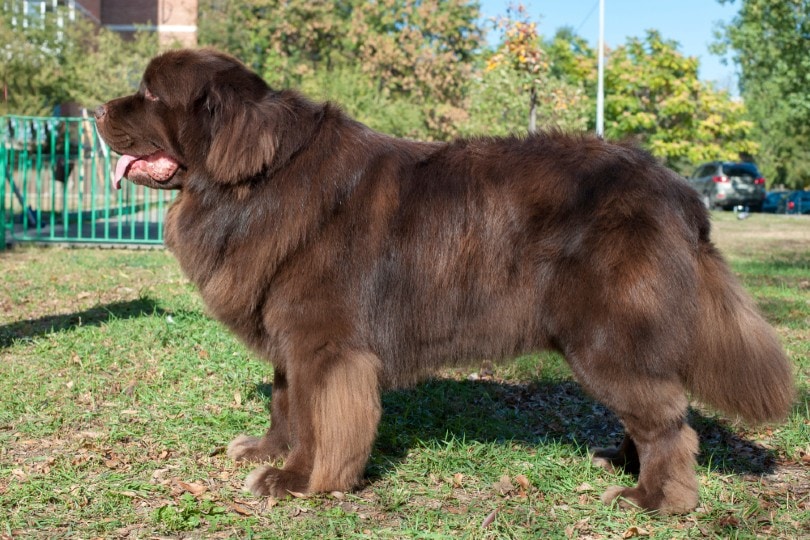
9. They Drool All Over the House
The droopy lips do look adorable, but they have one big con: drooling. While this certainly isn’t a trait that’s exclusive to Newfoundland dogs, they do, indeed, drool more than many other breeds. Again, similar to shedding, you must always be one step ahead of the disaster. Otherwise, your couch, chairs, and carpets will turn into a drooling mess.
Thankfully, there are some tried-and-true solutions to this slobber problem. Here’s a quick look:
- Towels. Yes, see that you have more than one towel ready-steady to handle the drool stains. The sooner you remove them, the better!
- Regular drying. Keep the dog’s mouth dry (like after a walk, run, or training session), to keep drooling to a minimum.
- Bandana/bib. Just tie it around the Newfie’s neck and call it a day. The bid will soak all that salvia and protect your furniture.
- Lay a rug on the floor. Doggos drool a lot when thinking about or chewing food. That’s why putting a rug right next to its bowl is a good idea.
- Feed the pooch regularly. This is especially true if you’re planning a long walk or ride. If the dog’s well-fed, it will drool less.
- Surgery. It’s definitely an option, but not a recommended one, as it might have a lasting negative effect on a Newfoundland woofer.
Potential Dangers of Excessive Drooling
These remedies don’t cost a pretty penny but do a great job of keeping the house nice and clean. Now, if your dog is drooling more than it used to, that might mean it’s dealing with a health issue (like maybe there’s something wrong with its teeth). Be quick to take it to a veterinarian for a full checkup. Excessive drooling could be caused by:
- Gum diseases and respiratory infections
- Week, decaying teeth or an aching tummy
- Various gastrointestinal disorders
- Mouth injuries (i.e. from eating something sharp)
- Anxiety (from moving to a new home)
- Neurological conditions or congenital defects
- Motion sickness or (in the worst-case scenario) epilepsy
- Infections (rabies, for example) and organ diseases
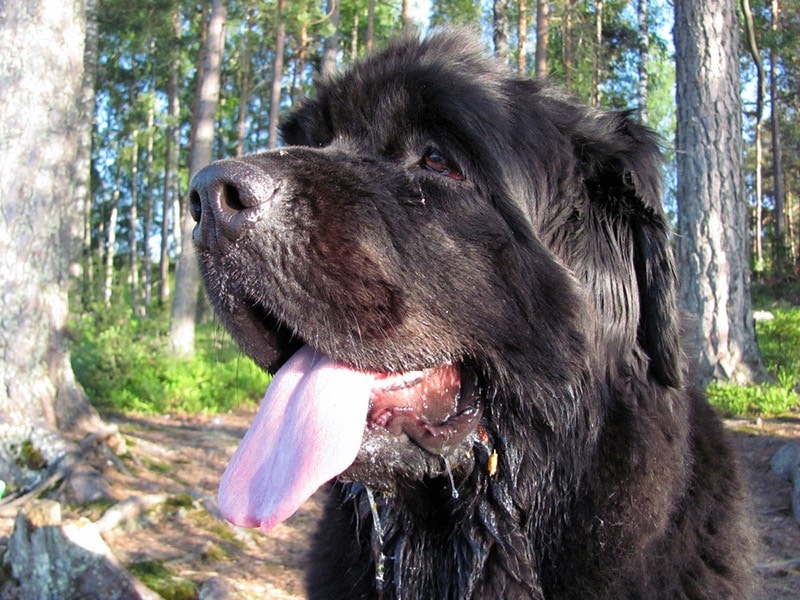
10. Newfoundlands Are Big and Heavy
While these dogs are cute and cuddly, fully-grown Newfies often weigh more than their owners! This could be a problem for teenagers and petite women. Newfoundland dogs are very gentle, but they also take up quite a lot of space in the room and can (accidentally) hurt a family member when playing or having fun. Please, keep this in mind if you have little kids in the house.
Most dog parents will have a hard time trying to lift this giant (when it’s hurt or ill and can’t walk on its own). The crate for such a dog also has to be bigger than average; otherwise, it will feel cramped up in it as if locked up in a cage. Also, if your dog tends to get anxious, it will end up breaking stuff around the house.
11. These Mighty Dogs Eat a Lot!
This one shouldn’t come as a surprise, given how big they get. But the one thing that many pet owners don’t realize is that Newfoundland babies eat more than other pups. So, while it’s still in the developing stage, (until the dog turns two years old), make sure you’re stocked on enough dry and wet food. We’re talking about 25 ounces at 3–6 months old and 25–30 when they reach 6–24 months.
As for adult pets, you won’t have to feed them 10 cups of food per day—not even close. They will eat more than the average dog, but it’s important not to overfeed them. For most, 4–5 cups should be more than enough; others will be better off with 3–4 cups of kibble or 32–40 ounces of premium-quality food. Talk to a veterinarian to come up with the right diet for your furry bud.
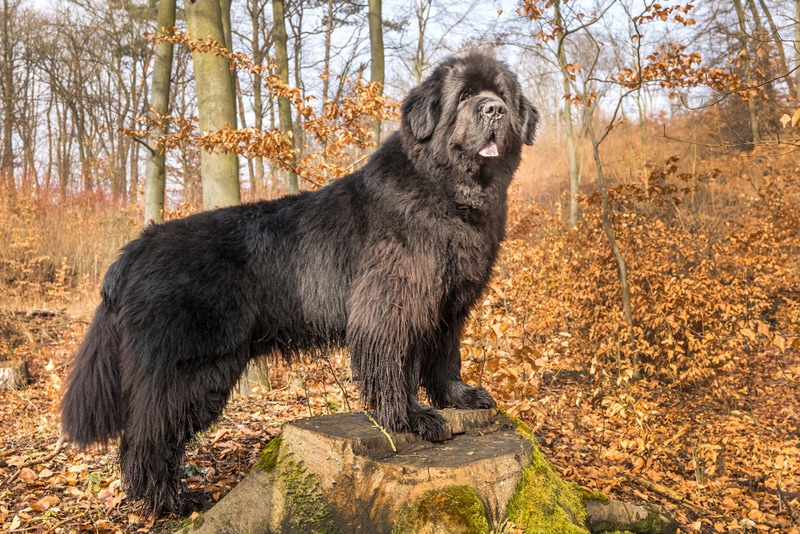
12. Newfies Can Be Stubborn and Destructive
The fact that these dogs are eager to please doesn’t mean they don’t have a stubborn side. Each dog is unique, but, ultimately, it comes down to how it was brought up. If you train it at an early stage and do everything right, the pup won’t be nearly as headstrong as an adult Newfoundland that you just got from a local shelter.
The same goes for the destructive nature of the pet. Again, dogs do have different personalities, yet their attitude can be shaped through obedience training. Besides, if you don’t leave the pooch alone for long and treat separation anxiety seriously, the dog won’t start crushing things the second you leave.
13. Some Males Are Overly Dominant
When a dog doesn’t go through years of training and socialization, it often becomes aggressive. Newfoundlands aren’t an exception to this rule. Mostly, that applies to males and their attempts at establishing dominance over other pooches. In some rare situations, this hostile attitude may manifest toward humans. We’re talking about strangers, distant relatives, or even members of the family.
To avoid this, introduce the pup to as many people and pets as possible. That’s the best formula for developing a loving, caring, and emotionally stable doggo. Don’t be too harsh or pushy with a Newfoundland but do remember that establishing a master-follower bond is critical.
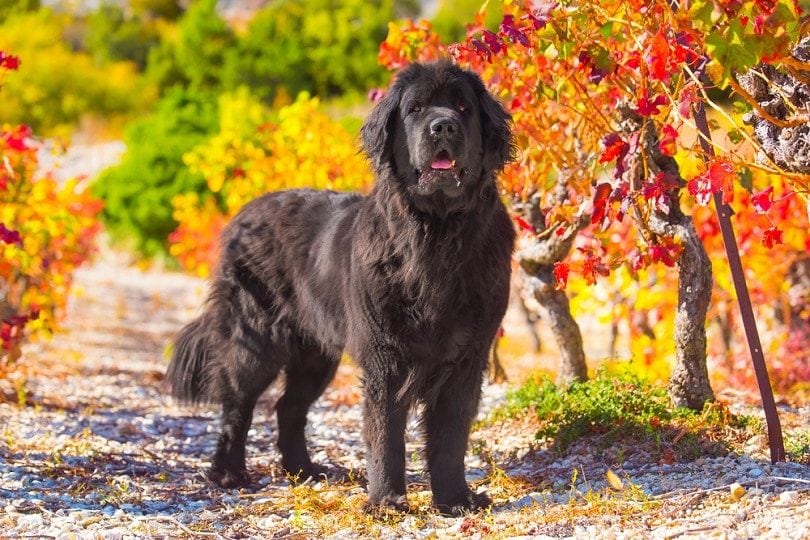
14. They Only Live for 9–10 Years
Sadly, like many giant dog breeds, Newfies have a short lifespan. For comparison, most average-size doggos live for 10–12 years, while the smaller pooches go on for up to 15 years, or even more. This is one of the biggest cons of adopting a Newfoundland: your family will get attached to it, and the loss of a furry bud won’t be easy to handle. Still not ready to change your mind?
Then do your best to feed the dog quality food, take it to regular veterinary checks, and spend as much time with it as you can to make the dog feel loved and cherished.
Conclusion
And that’s it for our pros and cons of adopting a Newfoundland. Just like with any other pet, it’s important to know in advance what to expect when inviting this dog to become a part of your family. As we learned today, Newfies are calm, peaceful, faithful, and affectionate doggos that require little training and attention to live happy, fulfilled lives.
They’re adaptive, hardworking, and perfect for the indoors. Newfoundlands do shed and drool extensively, though, and can be stubborn at times, not to mention eat more than the average pooch. But, at the end of the day, the benefits of owning a Newfy strongly outweigh the disadvantages. After all, no one can resist these sweet giants!
- Related read: Newfoundland Dog Grooming: 11 Expert Tips
Featured Image Credit: YAN WEN, Shutterstock,




